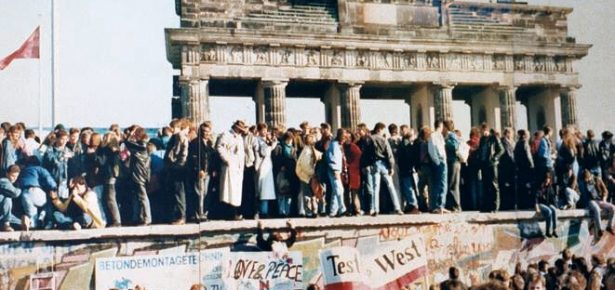
When the Berlin Wall famously fell on November 9, 1989, crowds from East and West Germany gathered along the border to celebrate the end of the Cold War in Europe. The Berlin Wall was a simple and powerful shorthand for the oppressiveness of communism not only in East Germany but Soviet-controlled eastern Europe more broadly. It invoked a sense that East Germany was cut off from the rest of the world and increasingly falling behind western Europe. In many ways, that was true. East German borders were among the most secure in the world. The physical borders were heavily militarized and permission to travel, especially out of the Soviet bloc, was incredibly difficult to obtain. Even among communist states in eastern Europe, East Germany was known for its surveillance apparatus—the secret police known colloquially as the Stasi—and its repressiveness. Now, more than thirty years after the fall of the Berlin Wall, this impression of East Germany as an isolated dictatorship endures.
From the perspective of the environment in central Europe, however, East Germany was an important link across the Iron Curtain. Concerns about the balance between economy and ecology emerged around the world after the Second World War. In central Europe, shared physical environments meant that pollution from heavily industrialized East Germany regularly crossed into neighboring states and vice versa. Pollution from East Germany’s industries—including coal mining and chemicals—created a host of problems. West Germany and Poland, the two countries that shared the longest borders with East Germany, were particularly affected by it. Air pollution and acid rain blew eastward into Poland, devastating Polish forests in the 1970s and 1980s. This degradation naturally created tensions with East Germany’s communist “friend.” At the same time, numerous rivers flowed from east to west, carrying pollution and toxins across the German-German border into West Germany. As early as the 1950s, West German politicians and diplomats complained about it.
Beyond physical connections, contact with media, information, and activists outside of East Germany further reveal the country’s position as a hinge between east and west. East Germans secretly watched West German television and relied on western media for environmental data that the East German dictatorship kept secret. By the mid-1980s, they also looked to reforms in Poland as an alternative to the repressiveness of the East German regime. Poland became a hub for eastern European environmental activists, and with more relaxed travel policies, brought eastern Europeans including East Germans into increased contact with western green activists.
In my book, Saving Nature under Socialism, I demonstrate the importance of border-crossing pollution and activism by placing East German environmentalism in a regional movement and a global moment. East Germany’s position at the nexus of communism and capitalism underscores the fact that the two systems did not exist or evolve in isolation during the Cold War, but rather, in very close proximity. Common concerns about growth, consumption, and environmental destruction arose regardless of political or economic system and spanned the Iron Curtain in postwar Europe.
Latest Comments
Have your say!